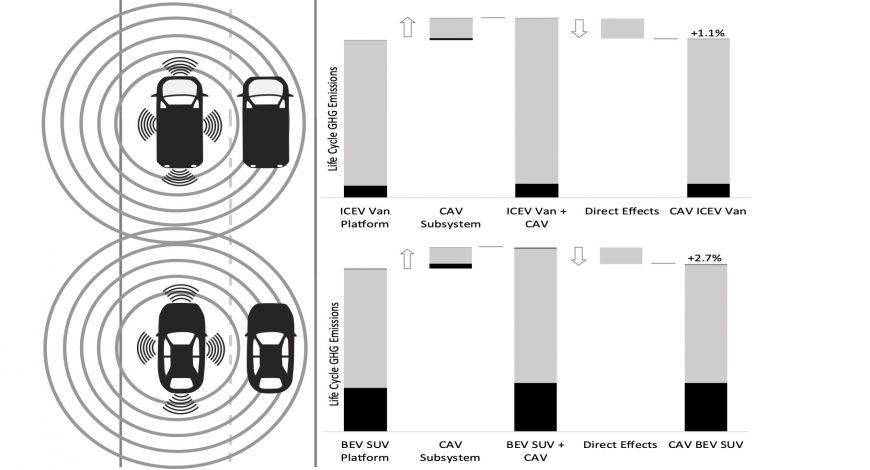
 back to all news
back to all news
Study Focuses on Life Cycle Greenhouse Gas Impacts of a Connected and Automated SUV and Van

ANN ARBOR—A new U-M Center for Sustainable Systems (CSS) study published in Transportation Research Part D examines the life cycle greenhouse gas impacts of a connected and automated SUV and van.
As technological advancements progress, the automotive industry is getting closer to producing Level 4 connected and automated vehicles (CAVs). Market trends indicate that personal vehicle sales are moving towards sport utility vehicles (SUVs) and the increasing use of ridesourcing services.
Existing studies that evaluate the environmental impacts of CAV technology focus on light-duty passenger cars or sedans; little is known about its impact on sport utility vehicles (SUVs) and vans.
This study applies life cycle modeling methodology to understand greenhouse gas emissions and primary energy use of a CAV SUV and van deployed as a ridesource fleet vehicle.
The authors of the study conducted a life cycle assessment of Level 4 CAV subsystem components integrated into battery electric vehicle (BEV) and internal combustion engine vehicle (ICEV) platforms. Vehicle lifetime was modeled based on deployment as an automated taxi. This study explores impacts of weight, drag, and subsystem electricity demand relative to benefits of eco-driving, platooning, and intersection connectivity at the vehicle system-level.
The results of this research show that current automated vehicle technology does not provide a direct path to reducing vehicle life cycle GHG emissions. Nicholas Kemp, a recent SEAS graduate and lead author, indicates that “computing power requirements of the technology outweigh delivered benefits from increased driving efficiency for all vehicle types.”
The study also found that CAV shows an increase in primary energy use and GHG emissions (2.7 percent, 2.7 percent for BEV; 1.3 percent, 1.1 percent for ICEV) compared with non-CAV platforms. “Vehicle electrification and grid decarbonization are especially important in improving environmental performance for future CAV technology deployment,” adds Greg Keoleian, senior author and director of the CSS.
The study is authored by Nicholas J. Kemp, Gregory A. Keoleian, Xiaoyi He, and Akshat Kasliwal.
Link to study: Life cycle greenhouse gas impacts of connected and automated SUVs and vans

